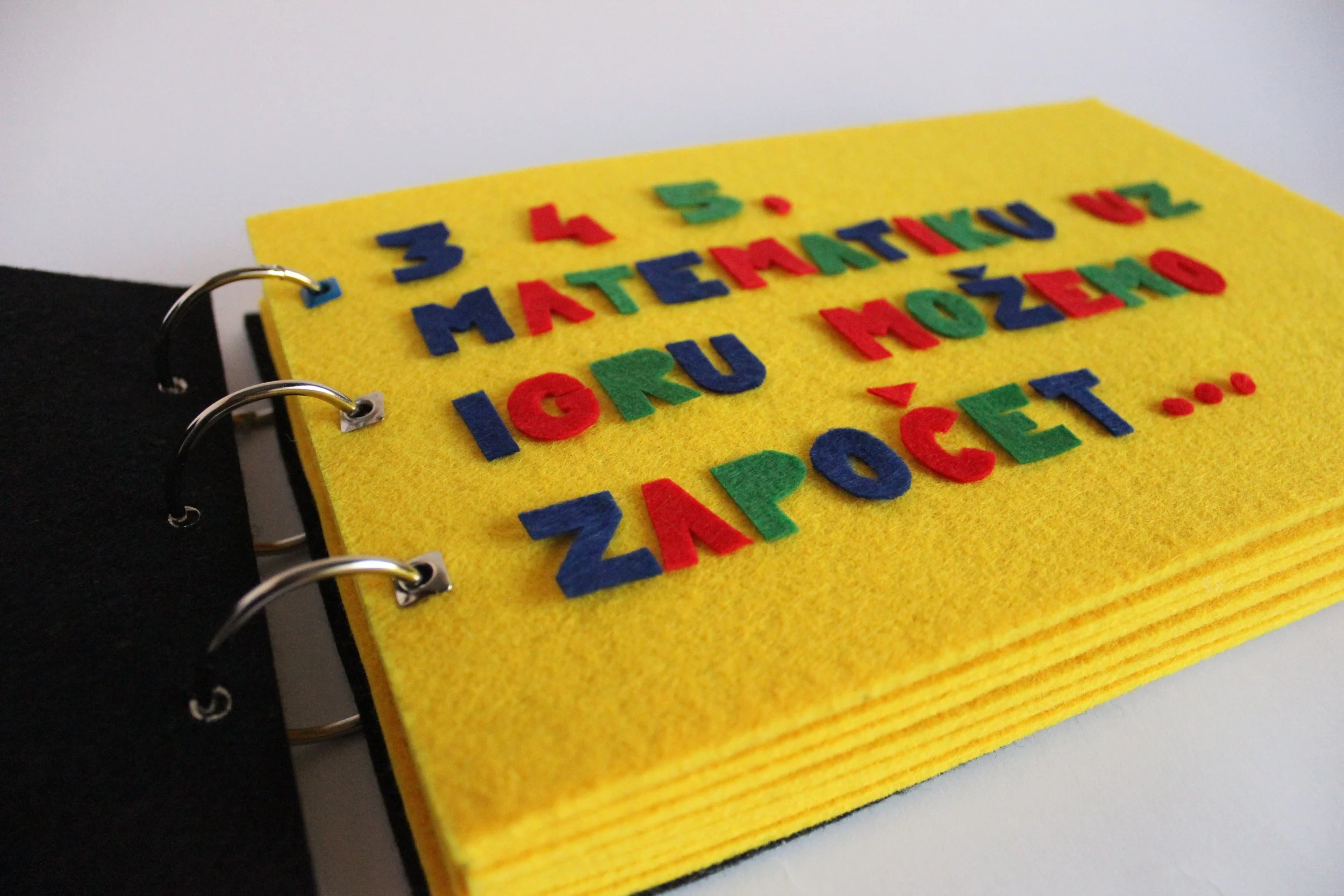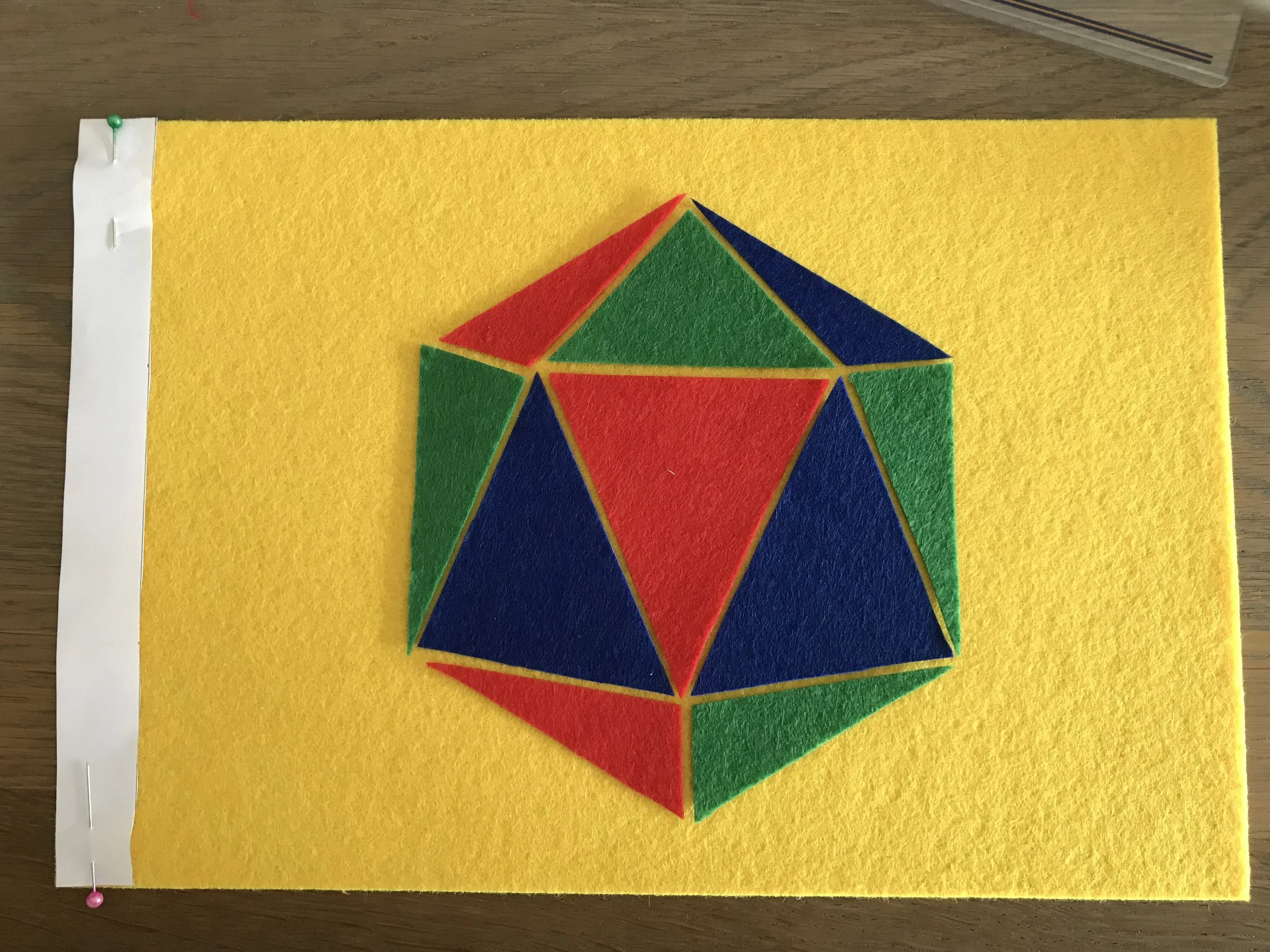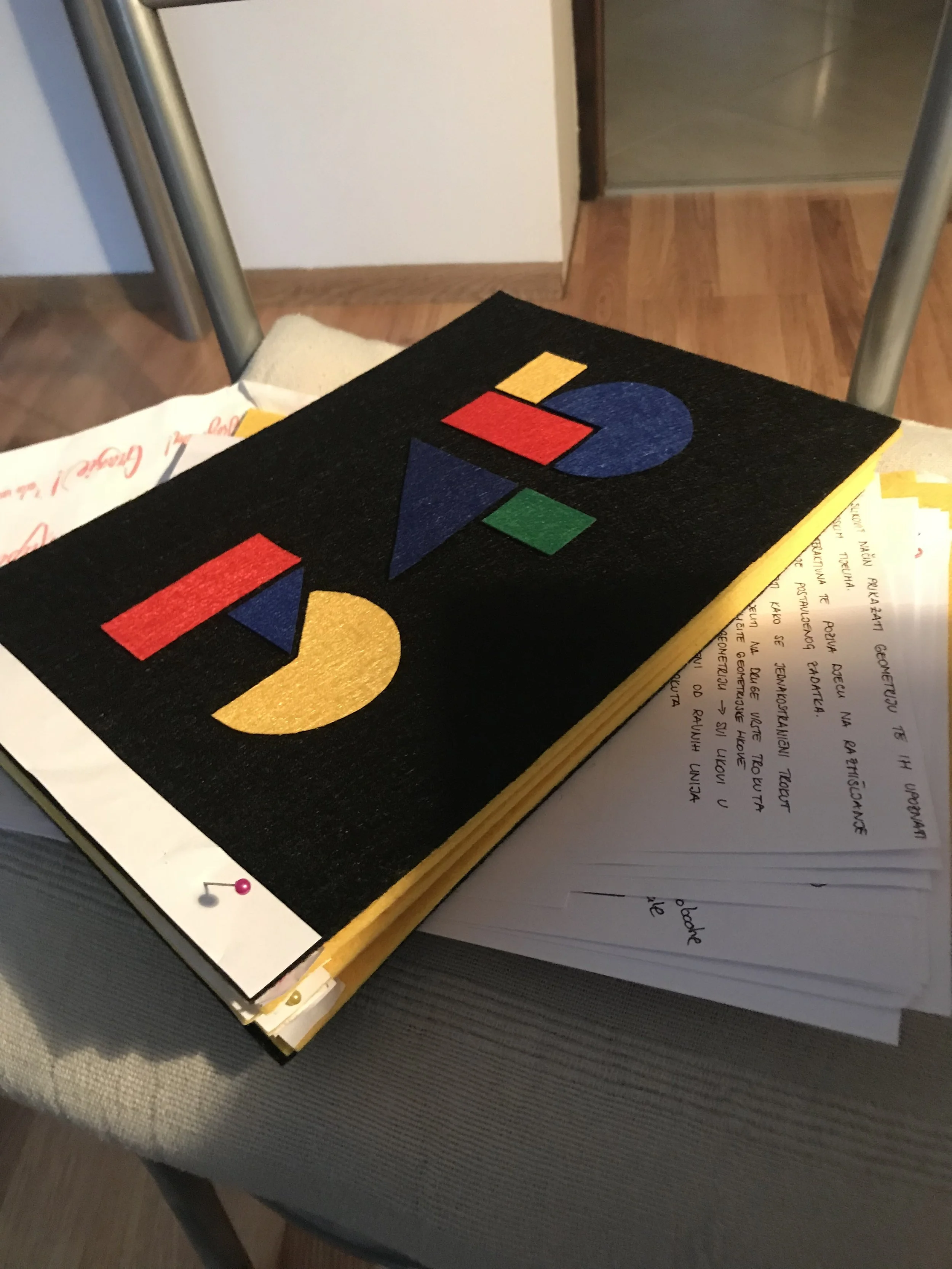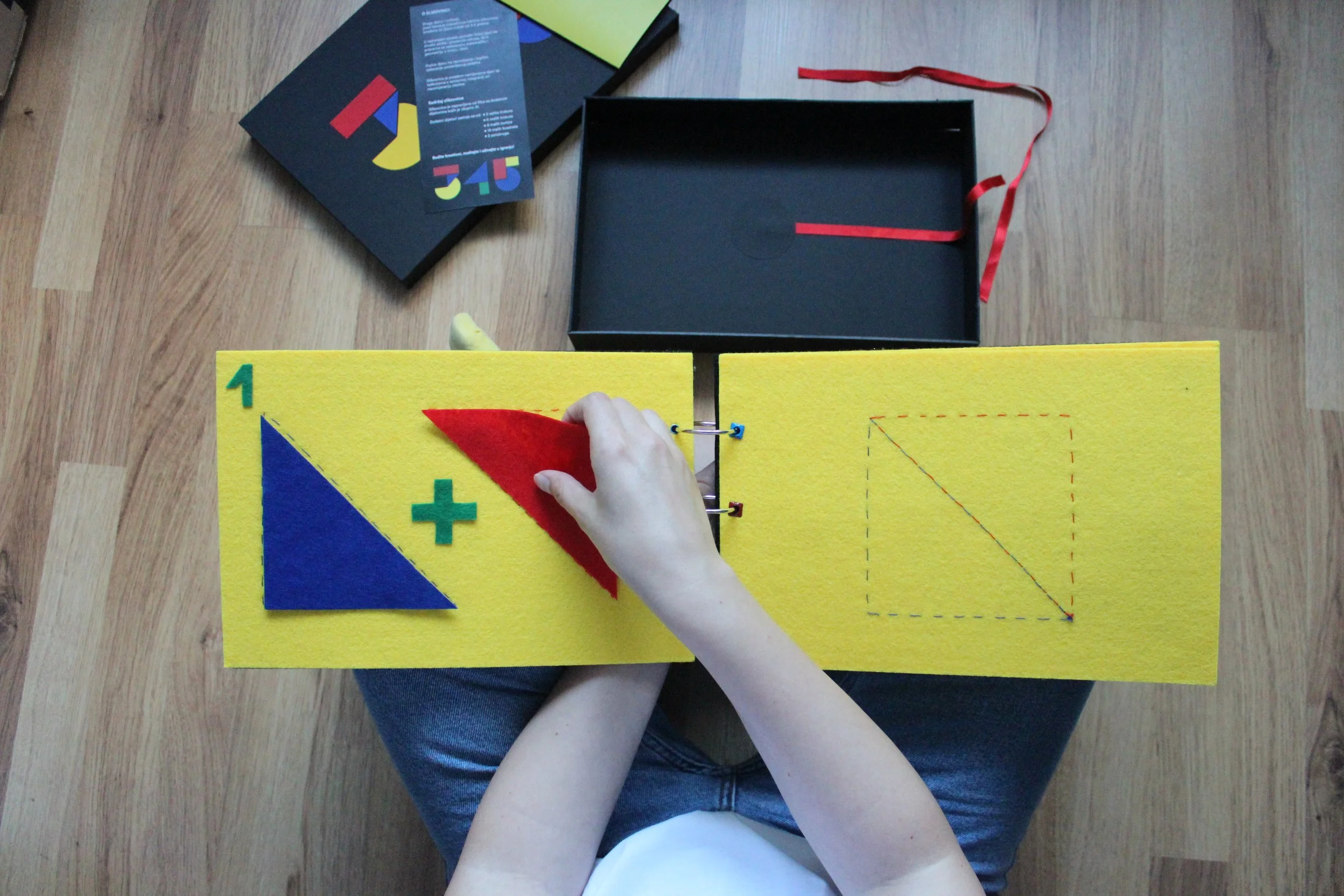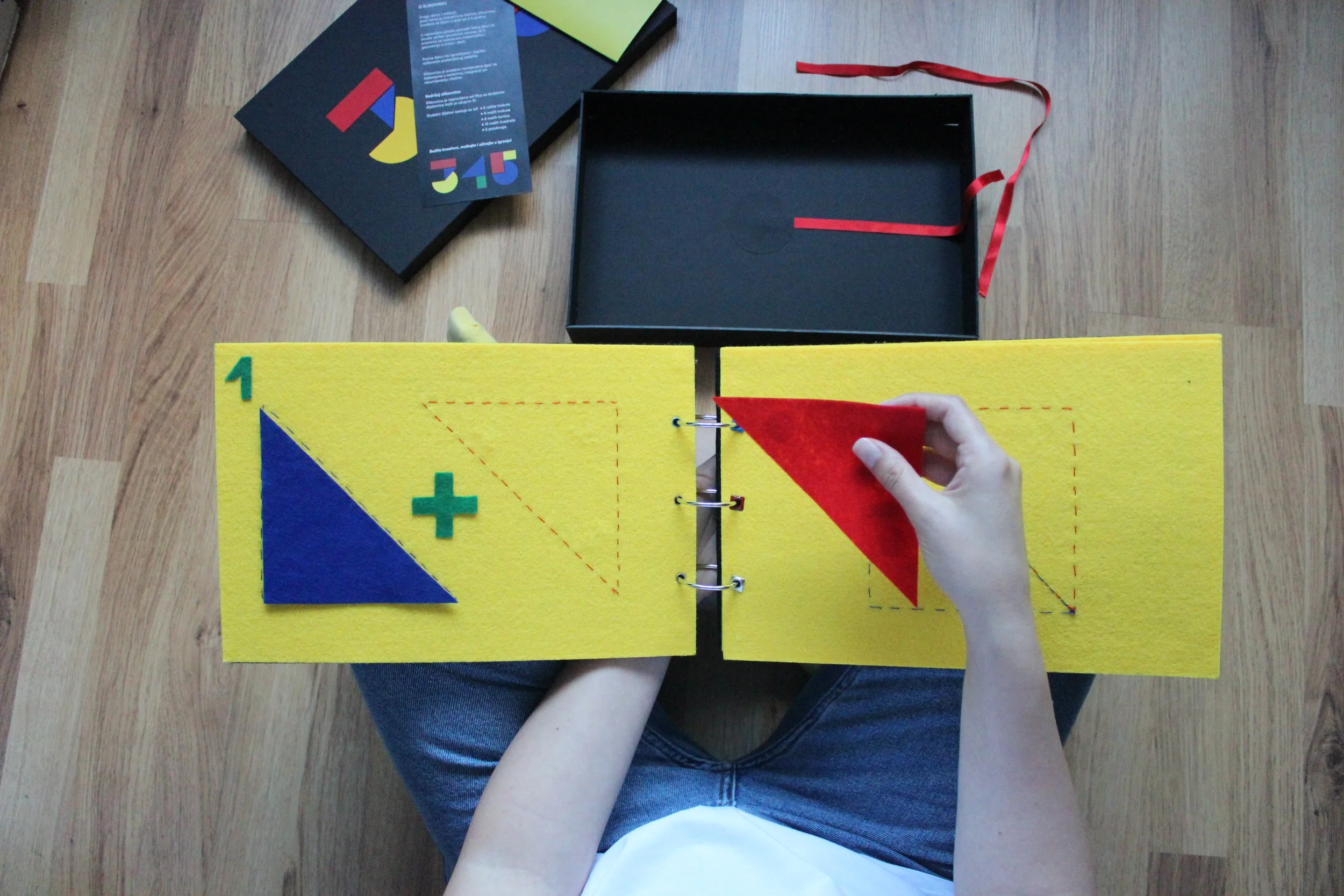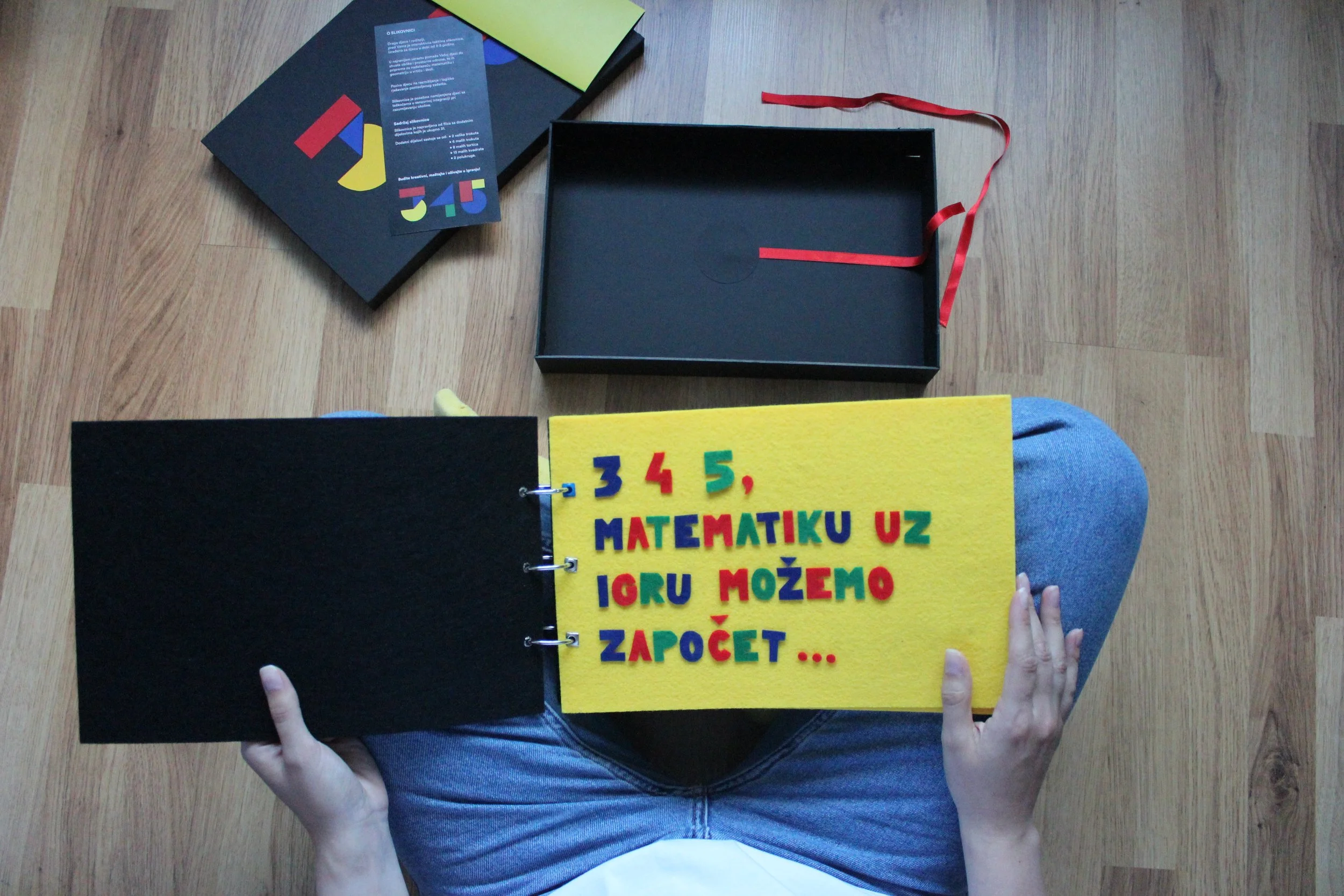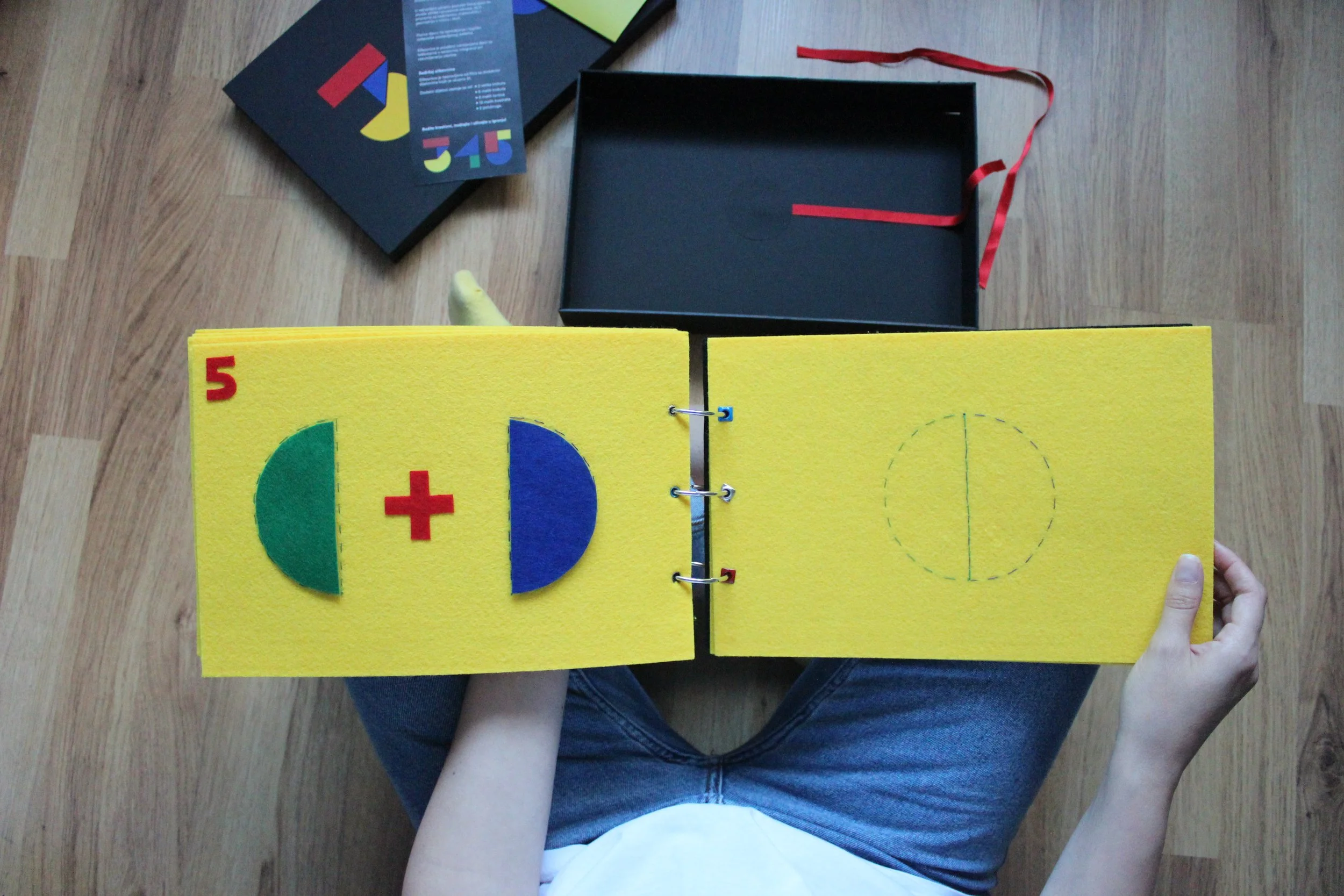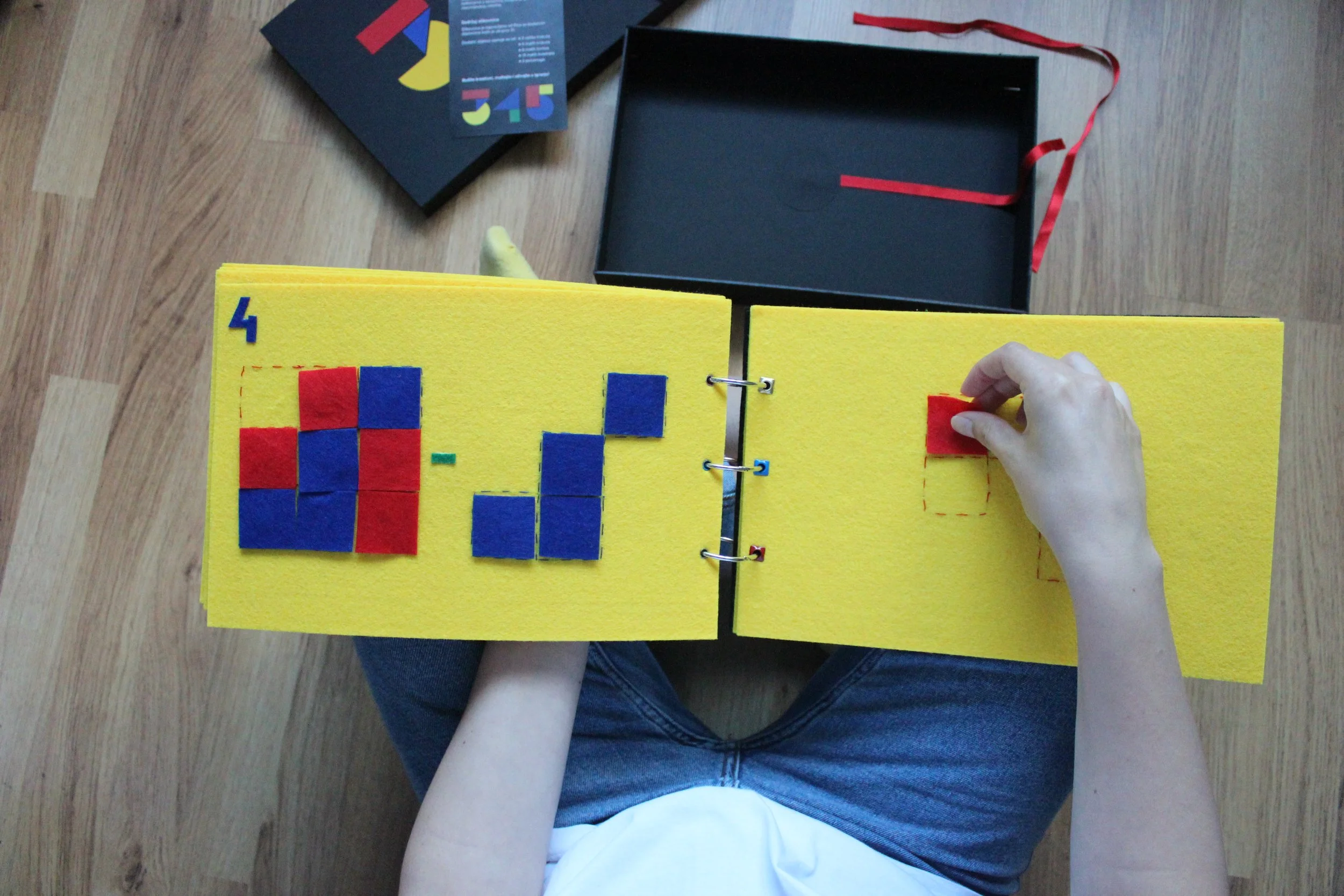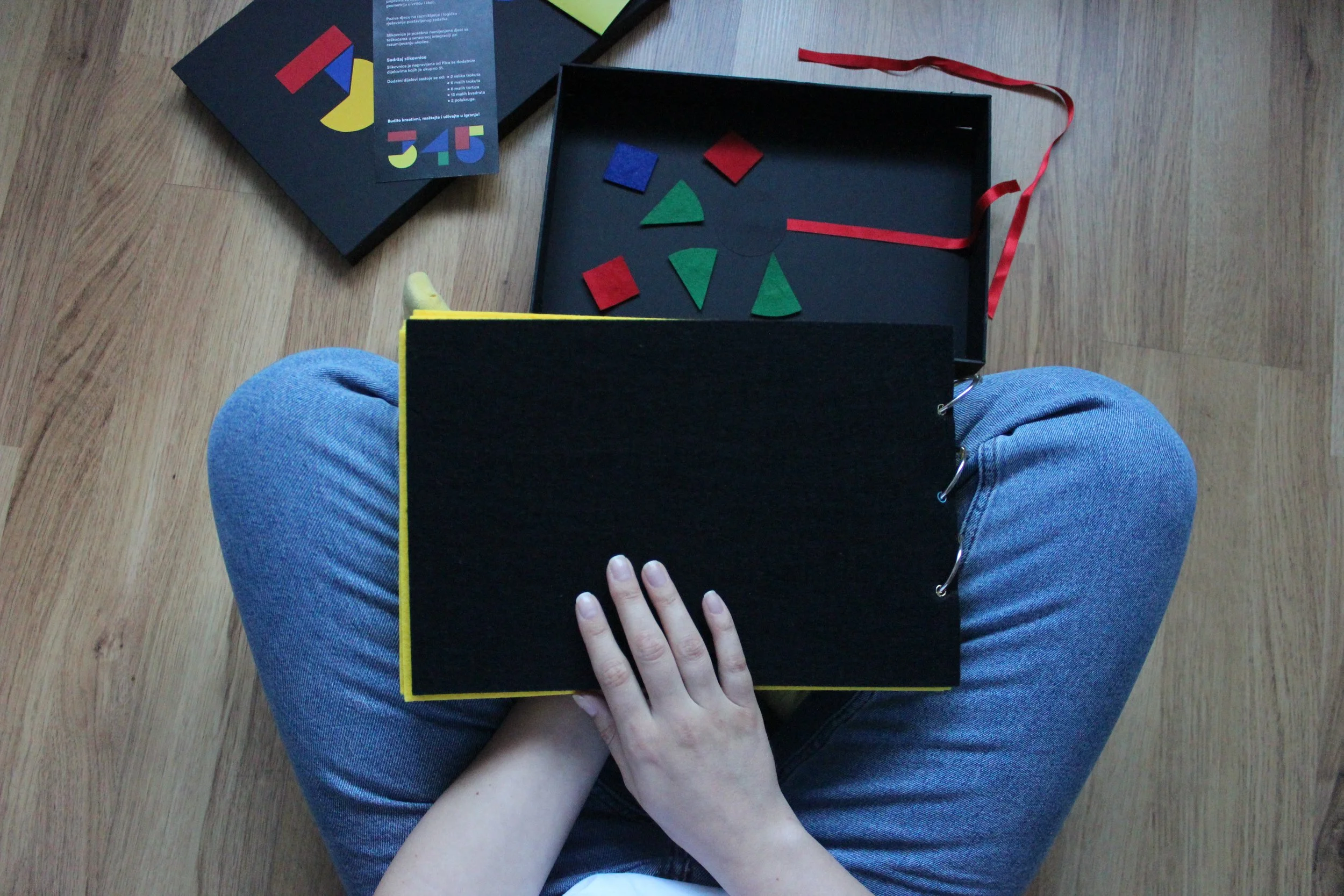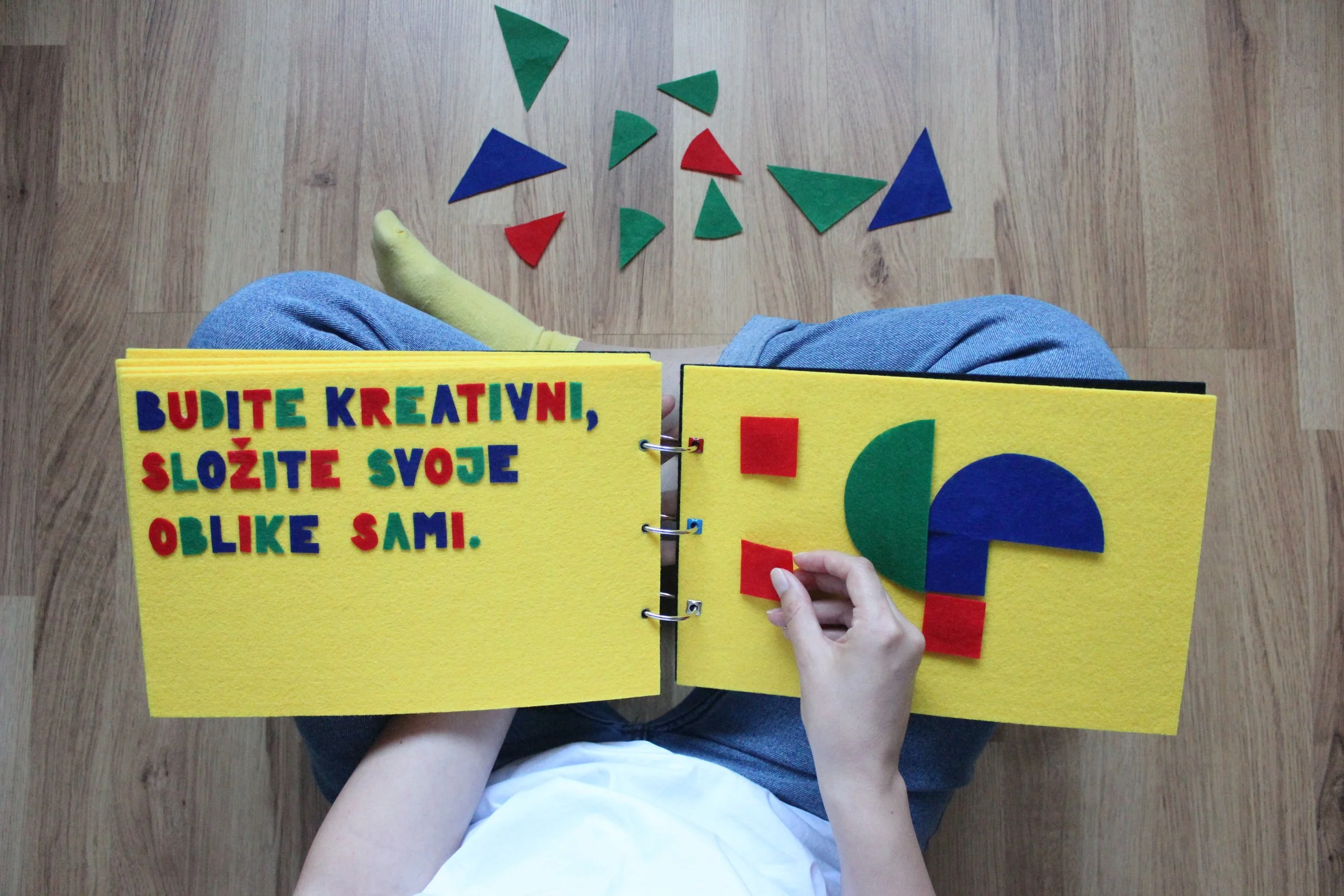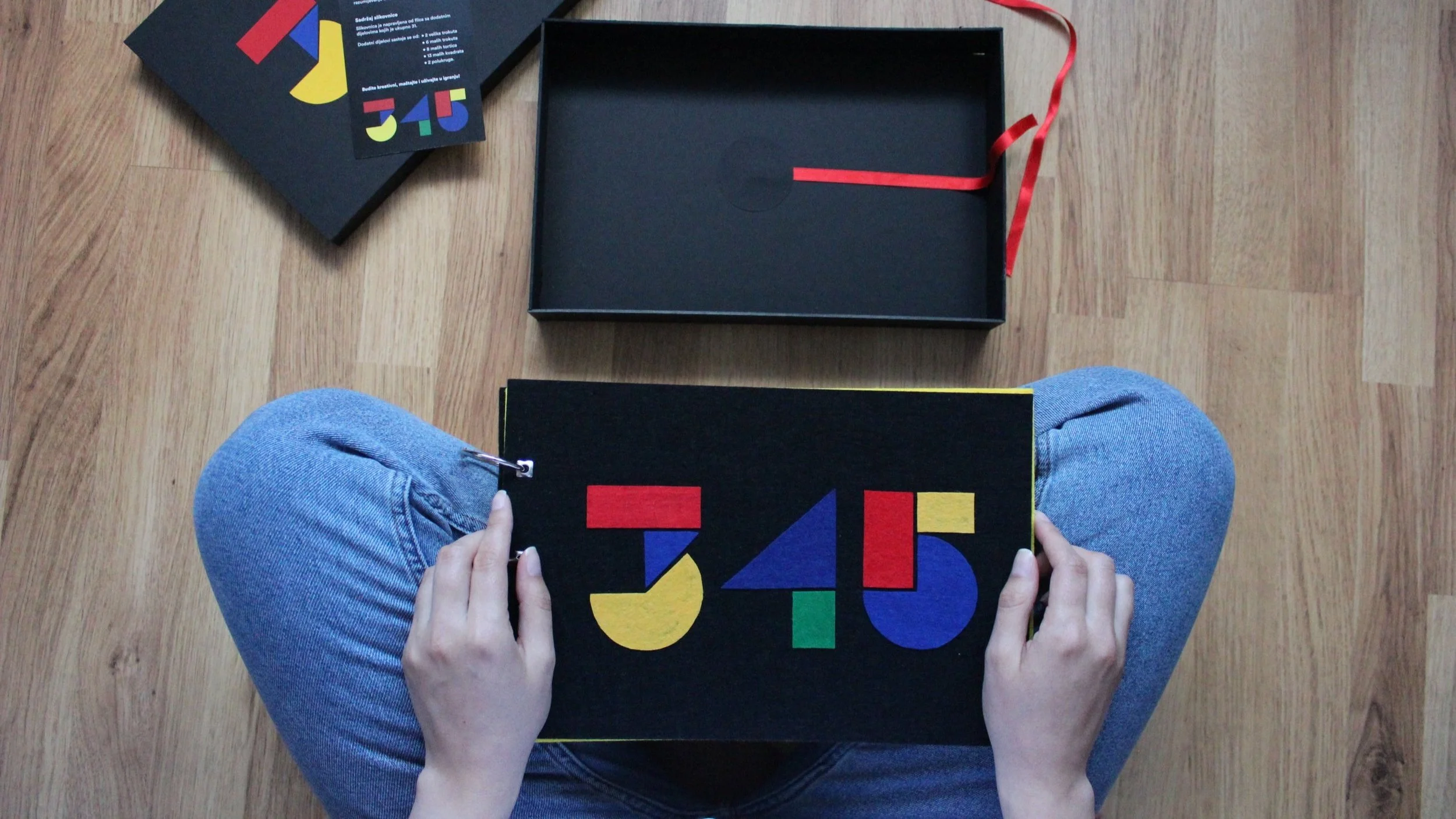
345
The sensory book was made for children between the age of 3-5 years, hence the name 345. The idea behind it is to be simple and fun, suitable for children of that age. Due to the possibility of stacking shapes and moving them, this book is meant to be engaging and entice the child to participate in solving simple math problems. Besides that, the sensory book can captivate a child’s attention preferably than playing on a mobile phone or watching TV. With visual, tactile, and kinesthetic inputs, a child gets to work on various skills at a time.
PERSONAL PROJECT
2018
The photos show some parts of the process of making the book. Choosing the right shapes, fabric, and way of storytelling suitable for children of that age. All aspects of the book are handmade and stitched by me.
The book was tested on a small group of children. It was exciting to observe children how they interact with it and use it. The surprise element while opening the box, the fact that the book is made of felt, and detachable parts were loved by children. However, improvements need to be made. One of the key insights is to make a book more inviting to learn alongside playing.
TEACHING PART
-

1. Include vivid shapes in the book
Math picture books can introduce your child to numbers, shape, space, patterns, and other foundational math thinking. All of them are basic situations that stimulate thinking and help your child to understand and learn them through vivid shapes and dynamic changes.
-
2. Specify shapes that show math ideas
Encourage your child to see different shapes and patterns in the book. Ask questions such as:
“What’s that shape?”
“Look, here is a blue triangle and a red triangle. What comes next?”
-
3. Ask questions that don’t have a single answer
Ask child:
“Can you tell me what you see on this page?”
“How do you know there are 2 triangles?”
-
4. Ask questions that go beyond the page
Challenge your child to think abstractly. Ask questions that relate words or pictures to a child’s life or encourage your child to make predictions.
For example, ask your child:
“What number do you think comes next?”
“Can you find two similar things to that shape in your room?”
-
5. Encourage your child to explain
If you were talking about some math problem and your child told you a story or explained the assignment that was set ahead of them, ask them to explain.
“How did you know that?”
-
6. Follow your child’s interest
Be sensitive and responsive to what your child notices in the book. Spend extra time on the parts of the book your child enjoys.
“Yes, there are five red squares. Do you want to count them again?”
-

7. Read with imagination and creativity
Be dramatic as you read the book. Use distinctive voices for different shapes. Try to dramatize different emotions while describing different math operations (addition, subtraction).
-
8. Re-read the book
First time you read the book you want to be sure the child understands the story that you are trying to tell. After that, re-reading books can help you and your child focus more deeply on math problems.
“Yes, the triangle has three sides, but what else do you see?”
Repeated readings can strengthen what your child has previously learned and stimulate the exploration of new ideas.
-
9. Enjoy the stories and have fun
An important goal of book reading is for children to enjoy the shared experience of reading a book. Try not to become so focused on teaching math that you forgot to enjoy reading with your child. Reading should be an enjoyable experience and intellectual adventure for both of you.

